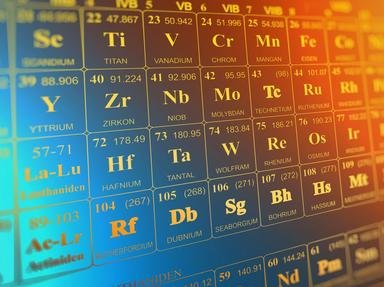
Scientists Honoured Trivia Quiz
Elements Named for Scientists
Of the many elements on the Periodic Table, several of them are named for scientists. Though many of these great names have contributed to chemistry, not all of them have been honoured. Can you identify the ones who have?
A collection quiz
by LeoDaVinci.
Estimated time: 3 mins.
- Home
- »
- Quizzes
- »
- Science Trivia
- »
- Chemistry
- »
- Periodic Table